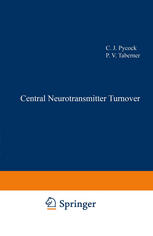

Most ebook files are in PDF format, so you can easily read them using various software such as Foxit Reader or directly on the Google Chrome browser.
Some ebook files are released by publishers in other formats such as .awz, .mobi, .epub, .fb2, etc. You may need to install specific software to read these formats on mobile/PC, such as Calibre.
Please read the tutorial at this link: https://ebookbell.com/faq
We offer FREE conversion to the popular formats you request; however, this may take some time. Therefore, right after payment, please email us, and we will try to provide the service as quickly as possible.
For some exceptional file formats or broken links (if any), please refrain from opening any disputes. Instead, email us first, and we will try to assist within a maximum of 6 hours.
EbookBell Team

0.0
0 reviewsThe concept of chemical transmission in the central nervous system has taken some time to be generally accepted, but an increasing number of compounds are now being recognized as hav ing a transmitter role in the brain. The acetylcholine system was the first to be discovered in the periphery and its charac teristic features of storage of transmitter in vesicles in the nerve terminal, its electrically-evoked release and rapid extra neuronal breakdown were considered to be necessary criteria for any neurotransmitter candidate. The subsequent elucidation of the noradrenergic system made it apparent that rapid enzymatic breakdown was not essential for a released transmitter, and the possibility of high-affinity re-uptake processes became establ ished as an alternative means of terminating the synaptic actions of a transmitter. With the eventual acceptance of the amino acids as excitat ory or inhibitory transmitters, the requirement for a transmit ter to be present in a low concentration overall (although locally concentrated in specific terminals) also had to be discarded. This necessitated the additional concept of specif ic metabolic pools with different functions being located in different cells or within different regions of the same cell. Some localization of glutamate and aspartate remote from excit able membranes is clearly essential since their overall brain concentrations would be sufficient to maximally depolarize the majority of neurones in the brain. The concept of separate metabolic pools has been supported by stUdies on turnover rate (see Chapter 5).